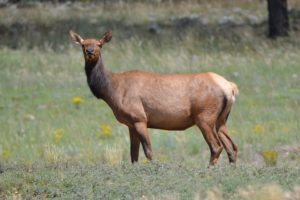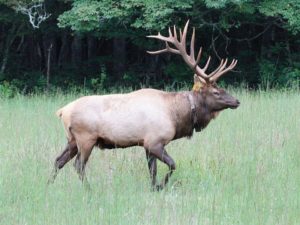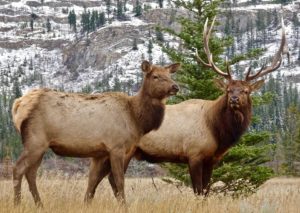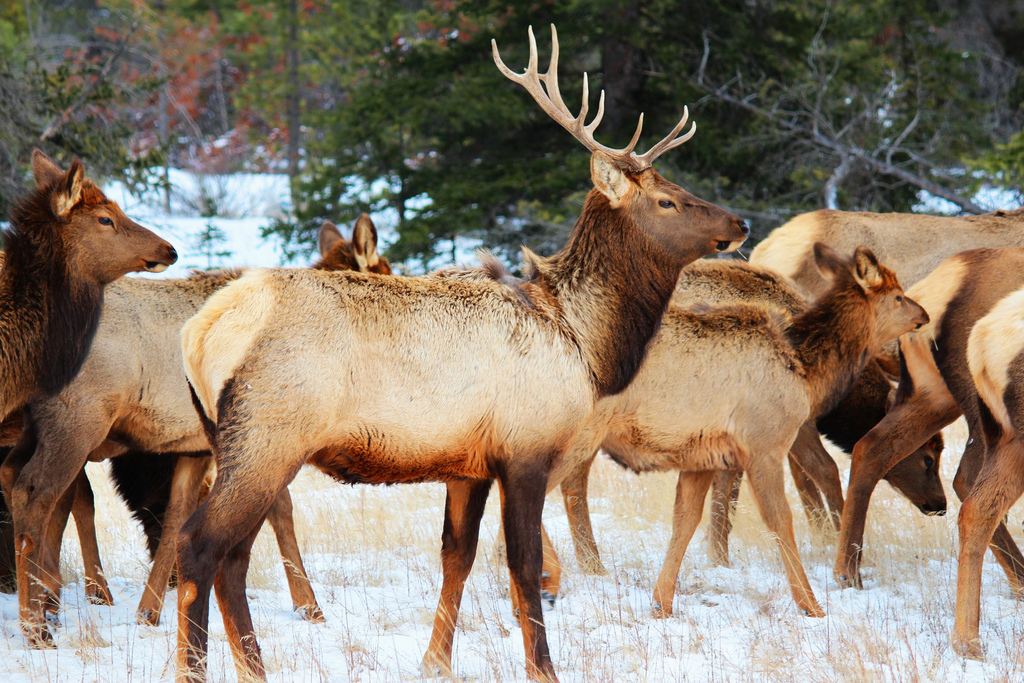The elk, also known as wapiti, is one of the largest deer species in the Cervidae family. They’re native to North America and eastern Asia, but they have also adapted quickly to countries where they have been introduced; namely Argentina and New Zealand. Take a look below for 27 more interesting and bizarre facts about elk.
1. During the winter, elk spend most of their time in valleys between mountains. This is where they feed on shrubs beneath the snow.
2. During the warmer months, they move higher up the mountain to graze and to give birth.
3. On average, wild elk live for 10 to 13 years while captive elk live for 20 or more years due to better living conditions.
4. They range in color from tan during the summer to dark brown in the winter. They have a characteristic buff colored rump, while their head, neck, belly and legs are darker than their back and their sides.
5. Elk cows range in weight between 225 and 241 kilograms, or 496 and 531 pounds. They’re 1.3 meters, or 4.3 feet, high, when measured at the shoulder. They’re about 2.1 meters, or 6.9 feet, in length from nose to tail.
6. Only male elk have antlers, which start to grow in the spring and shed each winter. The largest antlers can be about 1.2 meters, or 3.9 feet, long and weigh up to 18 kilograms, or 40 pounds.
7. Elk bulls are 40% bigger than elk cows at maturity. They weigh between 320 and 331 kilograms, or 705 and 730 pounds. They’re about 1.5 meter, or 4.9 feet, tall, when measured at the shoulder. They’re about 2.45 meters, or 8 feet, in length.

8. Their antlers are made out of bone that grows 2.5 centimeters, or 0.98 inches, each day.
9. While their antlers are actively growing, they’re covered with and protected by a soft layer of highly vascularised skin that’s known as velvet. The elk shed the velvet in the summer when the antlers are fully developed.
10. Elk are part of the Artiodactyla order of mammals, which means that they have an even number of toes on each foot. Camels, goats and cattle are also in this family.
11. Elk are ruminants, which means that they have four-chambered stomachs.
12. They’re herbivores, which means that they’re primarily plant eaters. Their diet varies on the season, but it mostly consists of grasses, sedges, flowers and other soft plants. In the winter, they’re sometimes known to eat woody plants such as cedar and red maple.
13. On average, they consume about 9.1 kilograms, or 20 pounds, of vegetation per day.
14. They’re social animals who live in same sex herds of 10 to 20 animals. The herds are loosely structures and are known to come together in larger groups, especially when they migrate to higher ground.
15. The Greater Yellowstone Ecosystem elk herd numbers are over 200,000 animals. During the spring and fall, they take part in the longest elk migration in the continental United States.

16. September and October are mating seasons for the elk.
17. Dominant male elk will form harems, which are groups of female deer that they will mate with.
18. They will defend a moving territory around the harem with males advertising their territory and status through bugling. Fights between dominant males and other male elk are intense and often result in injury, exhaustion and death.
19. Female elk are pregnant for 240 to 262 days. The offspring weighs between 15 and 16 kilograms, or 33 to 35 pounds.
20. When female elk are close to giving birth, they will isolate themselves from the main herd and will remain isolated until the calf is big enough to escape predators.
21. Elk offspring will remain with its mother for a year, leaving at the time when next season’s offspring are due.
22. Elk were once found across North America but were largely hunted and driven to take refuge in remote locations.
23. They’re called wapiti by Native Americans. The word translates to “light-colored deer.”

24. Some cultures around the world revere the elk as a spiritual force.
25. The elk are hunted as a game species because their meat is leaner and higher in protein than beef and chicken.
26. A male elk can produce 10 to 11 kilograms, or 22 to 24, pounds of antler velvet annually. In ranches in the United States, Canada and New Zealand, antler velvet is collected and sold to markets in East Asia where it’s used as homeopathic medicine.
27. The Rocky Mountain elk is the official state animal of Utah.




